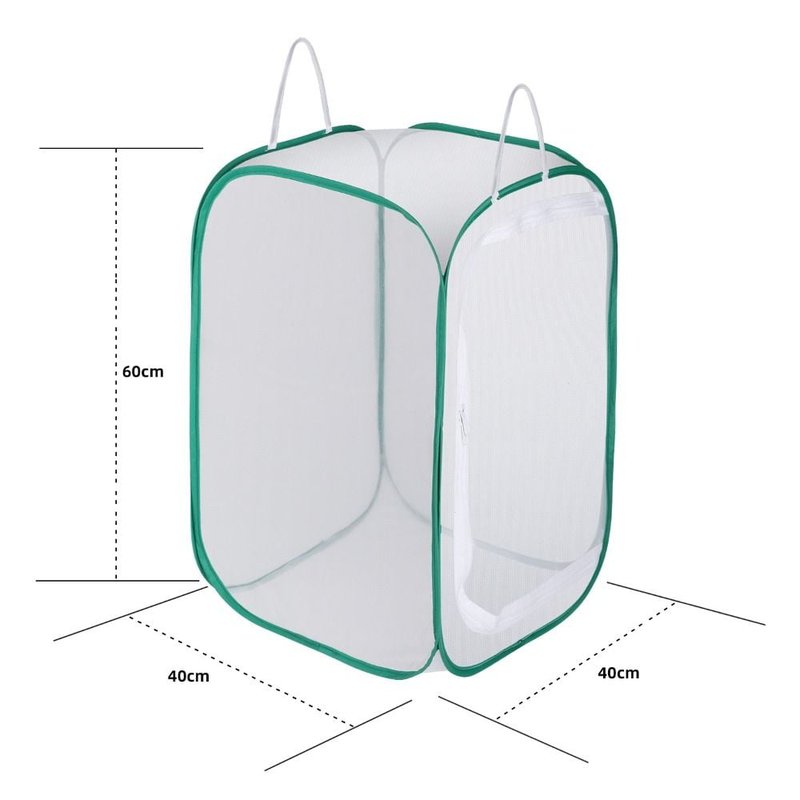
Setting up a silkworm-friendly enclosure can be both a fun project and a learning experience. Think of it as creating a cozy apartment for your silkworms where they can grow, eat, and eventually spin their silk. This article will guide you through everything you need to know about making the perfect home for these fascinating insects, whether you’re a teacher looking to inspire your students or a hobbyist excited to dive into the world of silk production. Let’s get started!
Why Choose Silkworms for a Classroom or Hobby?
You might be wondering why you should consider keeping silkworms. For starters, they’re incredibly easy to care for, making them ideal for educational environments. Silkworms have a lifecycle that’s both intriguing and educational. Students can observe the entire process of metamorphosis, from egg to caterpillar (larva), then to a pupa, and finally emerging as a moth.
Additionally, they don’t require much space or complicated setups. With a simple enclosure, you can house multiple silkworms, making them perfect for both individual projects and classroom demonstrations. Plus, did you know that they primarily eat mulberry leaves? Watching them munch on their food can be quite entertaining!
In a nutshell, silkworms teach patience, responsibility, and biology concepts in a hands-on way. They’re a fantastic way to engage students and spark curiosity about nature.
Choosing the Right Enclosure
Creating the ideal habitat for silkworms starts with choosing the right enclosure. You have several options, each with its pros and cons. Here are a few popular choices:
- Acrylic Boxes: These clear containers allow for easy observation and usually come with good ventilation. Make sure they have a lid to prevent escape!
- Plastic Tubs: These are often more affordable and can be a great choice for larger groups. Just ensure there’s enough airflow.
- Glass Terrariums: A bit fancy, but they can provide a gorgeous setup that mimics a natural environment. They’re also easy to clean!
Keep in mind that whatever you choose, the enclosure needs to be well-ventilated and easy to clean. Silkworms can be sensitive to humidity and temperature changes, so creating a stable environment is key.
Setting Up Your Silkworm Enclosure
Once you have your enclosure, the next step is to set it up properly. Here’s how you can create a comfy home for your silkworms:
1. Ventilation: Make sure the enclosure has holes for airflow. Silkworms thrive in environments with good ventilation, so don’t skimp on this part!
2. Bedding Material: You might want to add some soft paper towels or newspaper at the bottom. This helps absorb excess moisture and makes cleaning easier.
3. Food Source: As mentioned, silkworms primarily eat mulberry leaves. Set up a small dish where you can place fresh leaves daily. Be sure to replace old leaves to keep things hygienic.
4. Temperature and Humidity Control: Silkworms prefer moderate humidity and temperatures around 70°F to 80°F. If your enclosure is in a particularly warm or cool spot, consider adding a thermometer and hygrometer to monitor conditions.
By following these simple steps, you’ll create an inviting space for your silkworms that encourages growth and silk production.
Daily Care and Maintenance
Taking care of silkworms might sound daunting, but it’s actually quite straightforward. Here’s what daily maintenance looks like:
– Feeding: Ensure that your silkworms have fresh mulberry leaves daily. They eat a lot, so keep an eye on their food supply and replace it regularly.
– Cleaning: Remove any uneaten leaves or waste from the enclosure to prevent mold and bacteria growth.
– Monitoring: Check on your silkworms regularly. Are they active and healthy? If you notice any that seem sluggish or discolored, they might need extra care or could be unwell.
Isn’t it remarkable how such small creatures can teach us about responsibility and caretaking? You’ll find that with a little routine, keeping silkworms is both manageable and rewarding.
Common Challenges in Silkworm Rearing
Even with the best setup, you might run into a few hiccups along the way. Here are some common challenges you might face:
– Inadequate Ventilation: Without proper airflow, your silkworms may become sick. Keep an eye out for condensation inside the enclosure, which indicates poor ventilation.
– Temperature Fluctuations: Extreme heat or cold can stress your silkworms. If you live in an area with temperature changes, think about relocating the enclosure to a more stable climate.
– Mold Growth: Leftover food can spoil quickly, leading to mold problems. Make it a habit to check for and remove any old leaves daily.
Remember, every challenge is a learning opportunity. By addressing these issues proactively, you’ll ensure your silkworms remain healthy and happy.
Educational Benefits of Raising Silkworms
If you’re considering silkworms for a classroom, there are plenty of educational benefits beyond just watching them grow. Here are some key takeaways:
– Life Cycles: Students learn about the complete life cycle of an insect, including the stages of egg, larva, pupa, and adult moth.
– Responsibility: Caring for living creatures teaches students about responsibility and the importance of nurturing life.
– Science Experiments: You can engage students in experiments about growth rates, feeding habits, and more. It’s an interactive way to teach complex scientific concepts.
Involving students in this process can help foster a sense of respect for nature. They get to witness firsthand how ecosystems work—how living things depend on each other, and the role that even the tiniest creatures play in our world.
Creating a silkworm-friendly enclosure is both a fun and enriching experience for schools and hobbyists alike. With a little bit of effort, you can provide a safe home for these remarkable creatures while also discovering the intricacies of nature.
Whether you’re looking to spark an interest in science or simply enjoy having a unique hobby, raising silkworms can be a fulfilling journey. Don’t be afraid to dive in and experiment! You may find that these little caterpillars inspire a deeper connection to nature and learning. Happy silkworm rearing!

